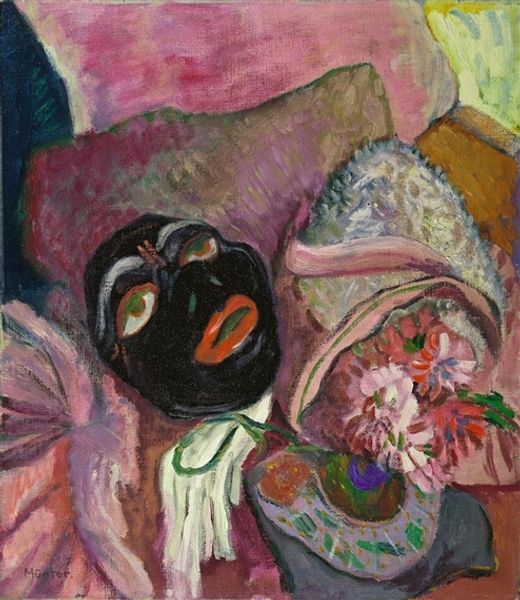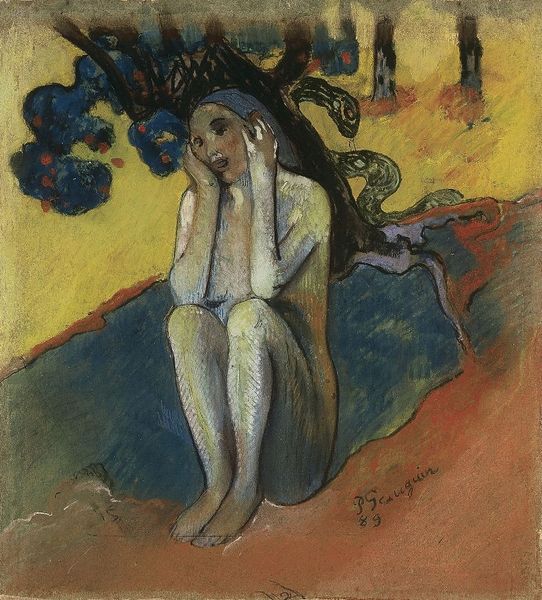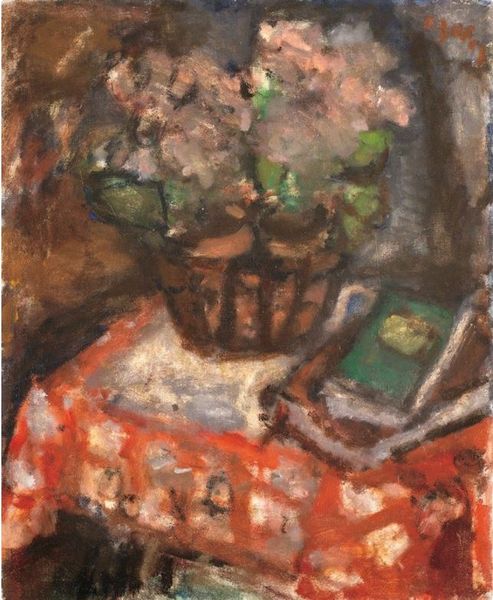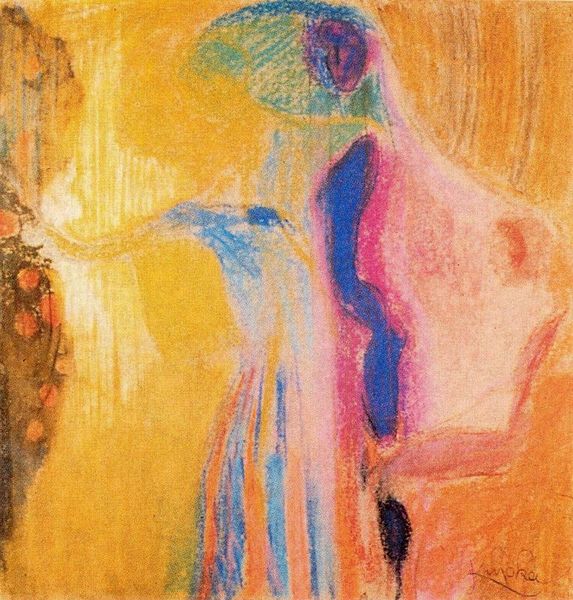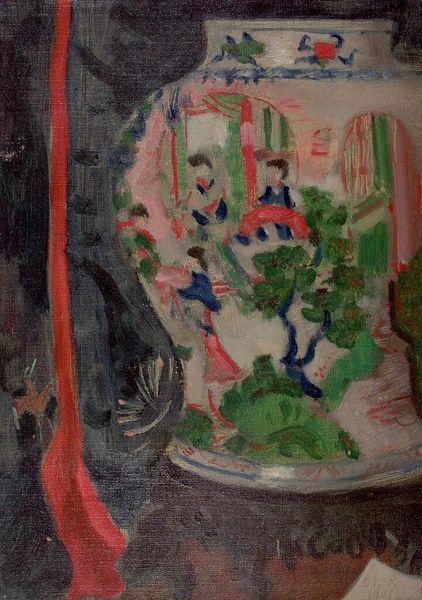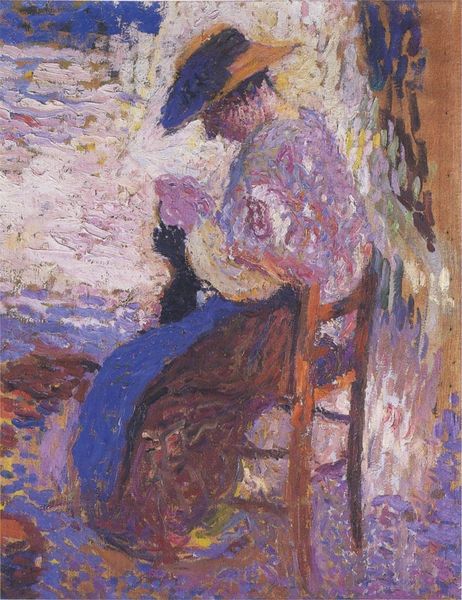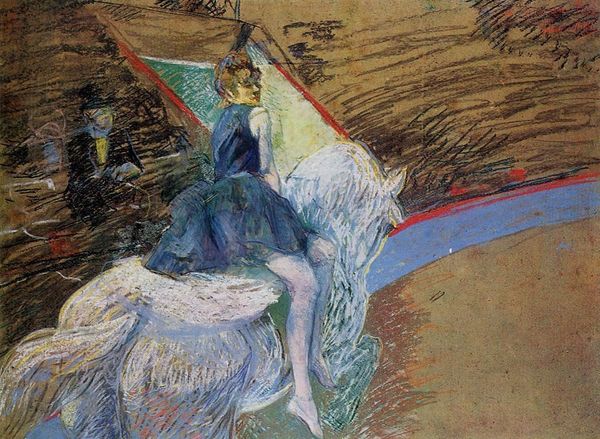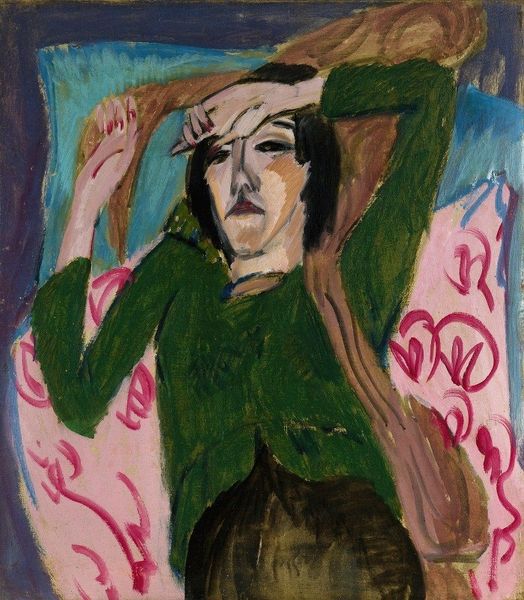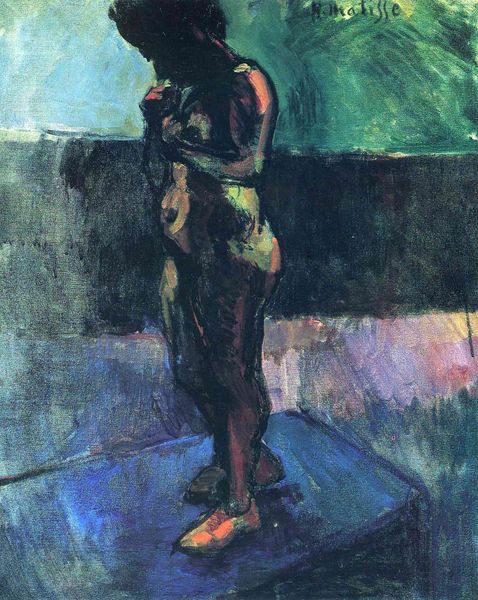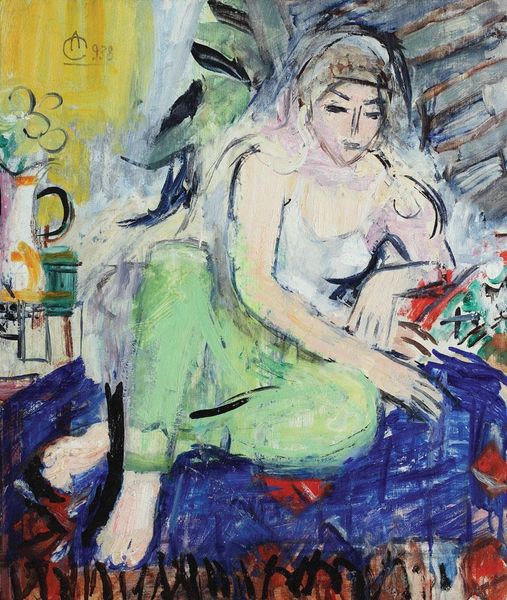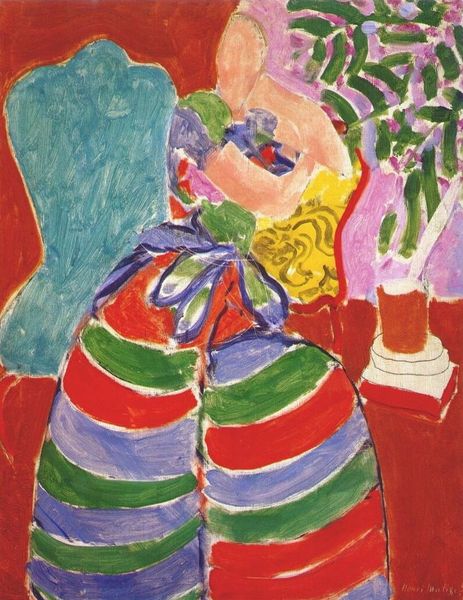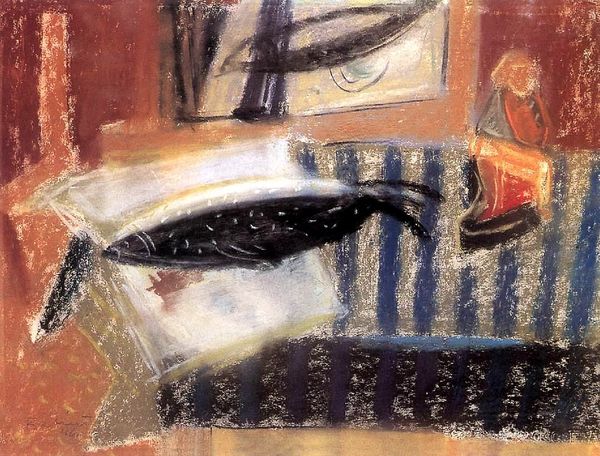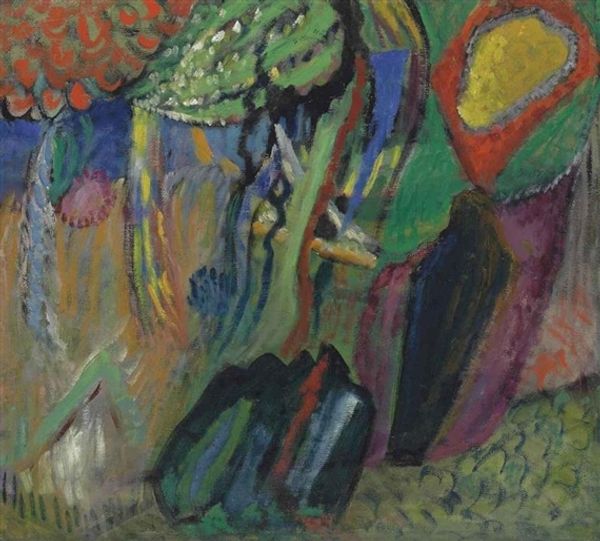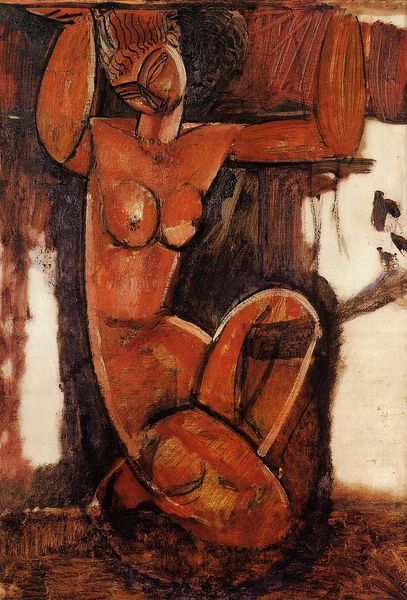
oil-paint
#
portrait
#
night
#
oil-paint
#
painted
#
figuration
#
cityscape
#
futurism
Copyright: Public domain
Editor: Standing before us is Umberto Boccioni's 1911 oil painting, "Nocturne". It has a somber, almost eerie quality; the distorted figure seems out of place amidst the harsh, geometric cityscape. How do we understand its place within Futurism? Curator: Boccioni and his Futurist peers aimed to capture the dynamism of modern life. However, this wasn't simply about celebrating technological progress. The figure in "Nocturne" hints at the psychological impact of the rapid industrialization reshaping Italy. Consider the fractured brushstrokes, the distorted features; what kind of unease do you think Boccioni was trying to portray about early 20th-century city life? Editor: The colours contribute to a sense of alienation – the green skin and deep blues give the subject an almost spectral quality. It's not the celebratory view of modernity I often associate with Futurism. Was Boccioni critical of the urban experience even at this early point? Curator: Exactly. Though Futurism often valorized the machine age, paintings like "Nocturne" reveal anxieties about its dehumanizing effects. These early works capture the psychological disruption alongside the visible changes to Italian society. You might want to consider how Futurism's ties to nationalist ideology also shaped its vision of modernity. Do you think the painting's somber tones would reflect a broad experience of the time? Editor: I see that – there's a tension between the avant-garde's promise and a genuine critique of urban alienation that is also depicted here. Curator: Yes, a deep understanding of art needs the analysis of political forces. Considering these cultural implications changes the painting's focus completely. I had not considered those elements before our conversation! Editor: Thank you, your perspective offers an essential historical perspective. It definitely helped me!
Comments
No comments
Be the first to comment and join the conversation on the ultimate creative platform.
